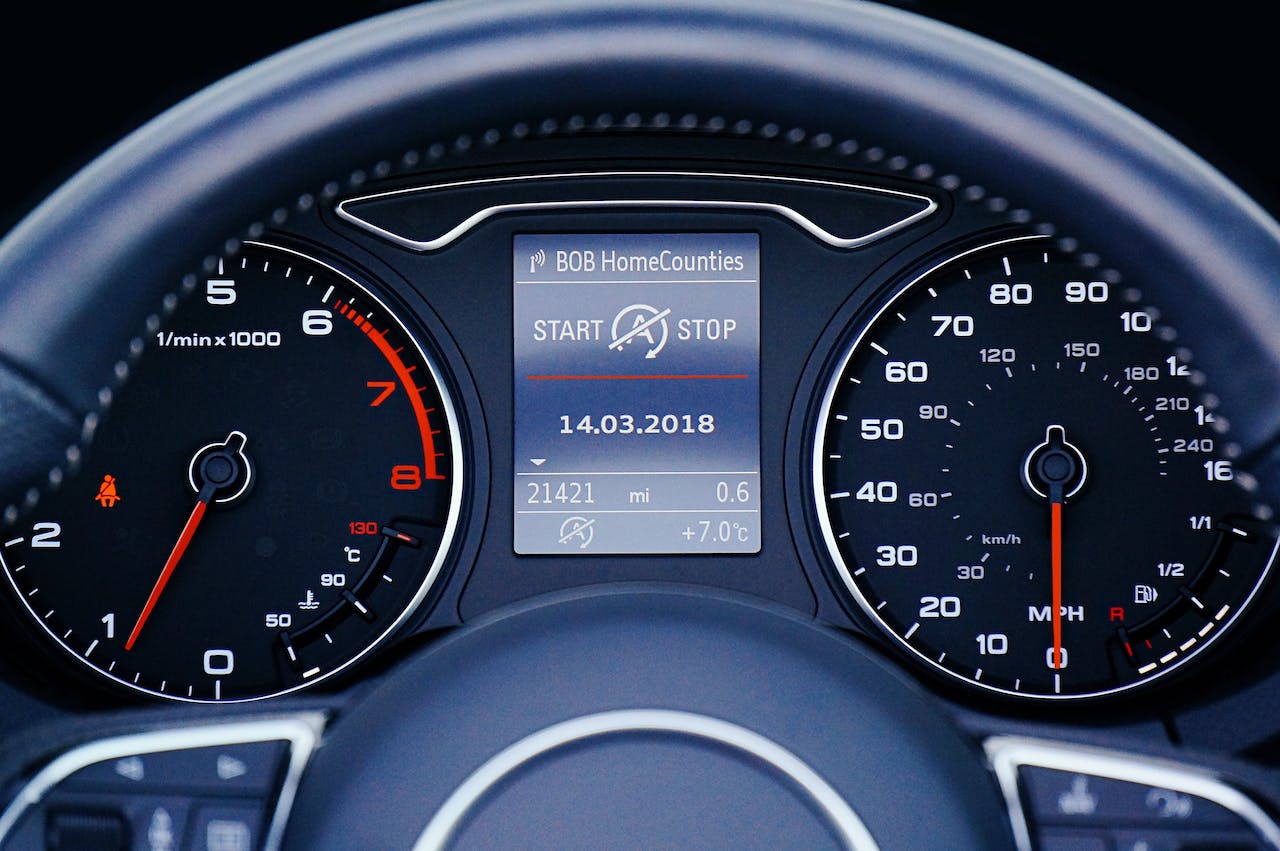Are you tired of the stress and hassle that comes with failing emissions tests? We’ve got your back! Dealing with these setbacks can be overwhelming, but fret not – we have the solutions to turn this situation around. From practical tips to expert advice, we’ll guide you through the steps needed to tackle emissions test failures head-on. Say goodbye to the anxiety and confusion that often accompany these situations. With our help, you’ll be equipped with the knowledge and confidence to handle emissions test failures like a pro. Stay tuned for valuable insights that will make dealing with emissions test failures a breeze.
Understanding Emissions Tests
Why Tests are Needed
Emissions tests play a crucial role in safeguarding the environment by reducing harmful pollutants emitted from vehicles. These tests are essential for ensuring clean air and protecting public health. By adhering to emissions regulations, drivers actively contribute to environmental conservation.
Common Failure Reasons
Cars often fail emissions tests due to issues such as faulty oxygen sensors or malfunctioning catalytic converters. A defective emissions control system can lead to increased emissions, causing test failures. Engine problems like misfiring spark plugs can also result in unsuccessful emissions tests.
Test Procedures
During emissions testing, vehicles undergo a series of standard procedures to assess their emission levels accurately. The process typically includes connecting diagnostic equipment to the vehicle’s onboard computer. Technicians conduct various tests, such as analyzing exhaust gases and checking for error codes to determine compliance with emission standards.
Preparing for the Test
Regular Maintenance
Regular maintenance plays a crucial role in preventing emissions test failures. By keeping up with scheduled maintenance, you can ensure that your vehicle is in ready status for the test. Maintaining components like the oxygen sensor and catalytic converter can significantly improve emission control.
- Consistent upkeep of your vehicle is key to passing emissions tests successfully.
- Well-maintained cars have better emission control, reducing the risk of test failures.
Check Engine Light
The check engine light serves as an important indicator when it comes to emissions testing. A lit check engine light can signal underlying issues that may lead to failed emissions tests. Addressing these problems promptly is essential to ensure your vehicle is in optimal working condition for the test.
- The check engine light directly impacts emissions test results.
- Ignoring a lit check engine light can result in failed emissions tests.
Fuel Considerations
Fuel quality has a significant impact on the outcome of emissions tests. Using high-quality fuel can help lower emission levels, increasing the likelihood of passing the test. Different types of fuel can affect emissions differently, making fuel considerations an essential aspect of preparing for emissions testing.
- Opting for quality fuel can positively influence emissions levels.
- Understanding how fuel choices impact emissions outcomes is crucial for test preparation.
Driving Tips Pre-Test
Implementing specific driving tips before your emissions test can enhance your vehicle’s chances of passing. Simple adjustments like avoiding aggressive driving and ensuring proper tire inflation can contribute to better emission results. These driving behaviors play a vital role in preparing your car for a successful emissions test.
- Adjusting driving habits before the test can improve emission results.
- Following recommended driving tips before testing can increase chances of success.
If Your Car Fails
Initial Steps
Upon discovering that your car has failed the emissions test, take proactive measures immediately. Begin by reviewing the test results to understand the specific issues identified. Contact a certified mechanic to assess the extent of repairs needed.
When your vehicle fails an emissions test, the initial actions are crucial. Addressing the problems promptly can prevent further damage and ensure compliance with environmental regulations. Seek professional guidance on the necessary steps to rectify the issues.
To tackle a failed emissions test effectively, learn about the first steps required for resolution. Prompt action can help minimize downtime and potential fines for non-compliance.
Repairs and Retests
After an emissions test failure, explore available repair options to address the identified issues. Consult with a qualified technician to determine the most suitable repair solutions based on the test results. Addressing emission-related problems promptly is essential for vehicle performance and environmental impact.
It is vital to understand that fixing emission-related issues before retesting is crucial. Ensure that all necessary repairs are completed to improve your vehicle’s emission levels and pass the subsequent tests successfully. Regular maintenance can prevent future failures and prolong your car’s lifespan.
Post-failure, familiarize yourself with the process of repairing and retesting your vehicle. Follow expert recommendations for repairs and schedule a retest at an authorized emissions testing center to verify compliance with regulations.
Time Extensions
In certain cases, time extensions may be granted for emissions test compliance. Understand when these extensions apply and how they can benefit you in meeting regulatory requirements. Time extensions offer flexibility in addressing emission-related issues without immediate retesting obligations.
To qualify for time extensions, familiarize yourself with the conditions under which they may be granted. Compliance with specific criteria set by regulatory authorities is essential to obtain an extension period for resolving emission concerns effectively.
Discover how time extensions can provide flexibility in meeting emissions test requirements while ensuring timely resolution of any identified issues. Utilize this opportunity wisely to address emission-related problems thoroughly before undergoing retesting procedures.
Dealing with Test Facility Issues
Reporting Damage
If you encounter problems during an emissions test, promptly report any damage to the testing facility staff. Ensure they document the issue for further investigation. Be clear and concise when describing the problem to facilitate a swift resolution.
In case your vehicle sustains any damage due to the testing process, gather evidence such as photographs or written statements from witnesses. This documentation will be crucial when seeking compensation for the incurred losses.
Seeking Compensation
When seeking compensation for damages caused during an emissions test, approach the test facility management or regulatory authorities responsible for overseeing these facilities. Provide them with all relevant evidence, including documentation of the incident and any costs incurred due to the problem.
It’s essential to remain persistent and assertive in your pursuit of compensation, ensuring that your rights as a consumer are upheld throughout the process. Consider consulting legal resources if necessary to navigate this complex procedure effectively.
Passing the Test Successfully
Last-Minute Checks
Before heading to the emissions test facility, ensure your vehicle’s gas cap is tightly sealed.
Inspect your tires for proper inflation and make sure there are no warning lights on the dashboard.
Double-check that all essential fluids like oil and coolant are at adequate levels to avoid any issues.
During the Test
When undergoing the emissions test, stay calm and follow the technician’s instructions carefully.
Ensure your vehicle is in good working condition by keeping up with regular maintenance schedules.
If your car fails the initial test, ask for a detailed explanation of the failure to understand the issue better.
Post-Test Tips
In case of a failed emissions test, take your vehicle to a reputable mechanic for necessary repairs promptly.
After repairs, revisit the emissions testing facility with confidence for a retest to ensure compliance.
Consider investing in routine maintenance to prevent future emission test failures.
Preventing Future Failures
Year-Round Maintenance
Maintaining your vehicle regularly is crucial to ensuring it passes emissions tests without any issues. Regular check-ups throughout the year can help identify and fix potential problems early on. By keeping up with maintenance schedules, you can prevent unexpected failures during testing.
To maintain your car effectively, make sure to change the oil and filters as recommended by the manufacturer. Keeping the engine in good condition reduces the chances of emission-related problems. Checking and maintaining proper tire pressure can improve fuel efficiency and reduce harmful emissions.
Emission-Friendly Driving
Practicing emission-friendly driving habits not only benefits the environment but also helps your vehicle pass emissions tests more easily. Avoid sudden accelerations and hard braking, as these actions can increase emissions. Opt for smooth driving and gradual speed changes to reduce stress on your vehicle’s engine.
When starting your car, allow it to warm up for a few minutes before driving off. This allows the engine to reach its optimal operating temperature, reducing emissions produced during cold starts. Furthermore, avoiding idling for extended periods can help minimize unnecessary emissions from your vehicle.
Regular Check-Ups
Scheduling regular maintenance check-ups with a qualified mechanic is essential for ensuring your vehicle remains in top condition. During these check-ups, have the technician inspect the exhaust system, spark plugs, and oxygen sensors for any signs of wear or damage. Addressing these issues promptly can prevent them from causing test failures later on.
In addition to professional check-ups, you can also perform basic maintenance tasks at home, such as checking fluid levels and monitoring dashboard warning lights. Keeping an eye on these indicators can alert you to potential issues that may affect your vehicle’s emissions performance. Remember that staying proactive with maintenance is key to avoiding test failures in the future.

Legal and Financial Assistance
Understanding Your Rights
Understanding your rights is crucial when dealing with emissions test failures. Knowledge of state laws regarding vehicle emissions can empower you to protect your interests. If you believe the failure was unjust, consult the local environmental agency for guidance.
Being aware of your rights can prevent you from being taken advantage of by repair shops or testing facilities. Ensure that you are not charged for unnecessary repairs or services. If you suspect foul play, request a second opinion from a different certified mechanic.
Financial Aid Options
Facing unexpected repair costs due to an emissions test failure can be stressful. However, several financial aid options can ease the burden. Seek assistance from local non-profit organizations that provide support for low-income individuals facing vehicle-related expenses.
e states offer financial assistance programs specifically designed to help individuals cover the costs of necessary repairs to pass emissions tests. These programs aim to ensure that everyone has access to affordable solutions without compromising their personal finances.
Success Stories
Before and After
Owners shared their experiences before and after addressing emissions test failures. Some struggled with the process, feeling overwhelmed. However, after seeking legal and financial assistance, they noticed a significant improvement.
One owner mentioned how their car failed the emissions test, causing them stress and uncertainty. They decided to seek help through legal channels and were surprised by the support they received. The outcome was positive, with their car passing the retest successfully.
Another individual faced a similar situation but chose to handle it independently. They felt lost at first but eventually found resources online that guided them through the process. Despite initial challenges, they managed to rectify the issue and pass the retest.
Tips from Owners
- Seek professional advice early on to avoid unnecessary delays.
- Research online forums or communities for guidance from others who have gone through similar experiences.
- Stay organized by keeping all relevant documents in one place for easy access during the process.
Summary
You now have the tools to tackle emissions test challenges confidently. Understand the process, prepare your vehicle, and know what to do if issues arise at the test facility. By following these steps, you can increase your chances of passing successfully and prevent future failures. Remember, legal and financial assistance is available if needed. Hearing success stories from others can also motivate you to overcome any obstacles you face during this process.
Take charge of your emissions test experience by implementing the strategies outlined in this guide. Your proactive approach will not only ensure a smoother testing process but also contribute to a cleaner environment. Stay informed, stay prepared, and remember that you have the knowledge to navigate through any emissions test situation successfully.
Frequently Asked Questions
1. What is an emissions test?
An emissions test checks the pollutants emitted by a vehicle to ensure it meets environmental standards set by regulatory authorities. It helps in reducing air pollution and maintaining air quality.
2. How can I prepare my car for the emissions test?
Before the test, ensure your car is properly maintained with no warning lights on. Drive at highway speeds for 20 minutes prior to the test to warm up the engine and exhaust system.
3. What should I do if my car fails the emissions test?
If your car fails, don’t panic. Get a diagnosis from a mechanic, repair the issues causing the failure, and then retest your vehicle promptly.
4. Are there any legal or financial assistance available for emission test failures?
In some cases, there may be programs offering financial assistance or repair vouchers for low-income individuals to help with emission-related repairs. Check with local authorities or environmental agencies for more information.
5. How can I prevent future emission test failures?
Regular maintenance is key. Keep up with routine servicing, address any warning lights promptly, drive your vehicle regularly at varying speeds, and use high-quality fuel to maintain optimal performance and reduce emissions.
Are You Facing Car Emissions Test Failures?
Experience the unparalleled expertise of autoTECH Blackhawk in addressing car emissions test failures. Why choose autoTECH Blackhawk for resolving your emissions test issues? Our hallmark is our unwavering commitment to building lasting relationships with our customers, a crucial aspect in the complex domain of car emissions systems and their maintenance. This commitment is the cornerstone of our tailored service, guaranteeing that our emissions test solutions are precisely tailored to meet your individual needs and objectives for your vehicle’s performance and reliability.
Whether you’re troubleshooting a failed emissions test, dealing with your car’s emissions failures, ensuring the compliance of your family car, or seeking expert advice on any emissions system anomalies, autoTECH Blackhawk stands as your reliable ally. We are proud of our industry-leading 3-year/36,000-mile warranty and our promise to utilize only Original Equipment and manufacturer-recommended parts, assuring your complete satisfaction with our emissions test failure solutions. Don’t hesitate to contact our friendly team today to schedule a convenient and contactless consultation for your car’s emissions test needs!


